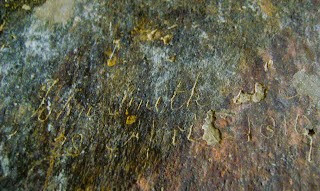Ajanta Caves
The Ajanta Caves are 29 rock-cut Buddhist cave monuments dating from the second century BCE to about 480 CE in the Aurangabad District of Maharashtra state in India. They are a UNESCO World Heritage Site and contain well-preserved paintings and sculptures of Buddhist art and culture.
What is the exact location of Ajanta Caves?
The caves are situated in the district of Aurangabad in Maharashtra, India. They are near Fardapur, on the road that connects Jalgaon and Aurangabad. A semi-circular ridge on the western ghats or the Sahayādri is where the Waghora river runs. Ancient Buddhists carved the caves into this ridge.
When do Ajanta caves were made?
The caves were built in two phrases with a gap of five centuries. The first phrase, known as the Early phrase, lasted from the 2nd century BCE to the 1st century CE. Five caves (Caves 9, 10, 12, 13 and 15A) belong to this phrase. The Satavahana kings ruled the region at this time. These caves are simple in design. They consist of two chaityagṛhas and three vihāras.
The second phrase of construction happened in the 5th century CE. Most of the caves are from this Later phrase, which included two chaityagṛhas and many Later vihāras. They were built with royal support. These caves have intricate sculptures and paintings. The Vakataka kings ruled the region then, and it was under the control of the Vatsagulma branch led by Hariṣeṇa.
Who built Ajanta Caves?
In the Early stage, many donors ordinary people, traders etc contributed to the building of the caves.
In the Later stage, single donors or sponsors such as kings, merchants and monks also funded the caves. Cave 16 was funded by Varāhadeva, the secretary of King Hariṣeṇa. Cave 4 shrine was funded by a trader named Mathura from the Karvatiya clan. Cave 26 complex ( which includes caves 25, 26 and 27) was funded by a monk named Buddhabhadra. Caves 17, 19 and 20 and the water cistern ( numbered as cave 18) were funded by a king called Dharādhipa.
How were the caves discovered by the British Army?
 |
| John Smith left his name and date on one of the paintings in Cave No. 10 |
The caves were discovered by the British Army in 1819 when Captain John Smith of the Madras Presidency was on a tiger hunting expedition. He accidentally found the entrance to Cave No. 10 while chasing a tiger across a deep ravine. He also left his name and date on one of the paintings in the cave, which can still be seen today.
What is the significance of Ajanta Caves?
The Ajanta Caves are a UNESCO World Heritage Site and a remarkable example of Buddhist religious art. The caves contain paintings and sculptures that depict the life of the Buddha, the Jataka tales, and other Buddhist themes. The caves are also a valuable source of information about the Vakataka dynasty, which patronized the construction of the caves in the 5th century CE. The caves are considered to be among the finest surviving examples of ancient Indian art.
Paintings in Ajanta Caves
The Ajanta caves are a group of 29 rock-cut Buddhist monuments in Maharashtra, India. They contain some of the finest examples of ancient Indian art, especially paintings that depict the life of Buddha and his previous incarnations. The paintings cover the walls, pillars and ceilings of the caves and are made with natural pigments. Some of the most famous paintings are Bodhisattva Padmapani, King Janaka & Wife, The Dying Princess, The Persian Embassy and The Flying Apsara.
The Ajanta paintings were made on a dry surface using a technique known as Tempera. The artists first applied a rough plaster of clay, cow dung and rice husks on the cave walls, then coated it with lime juice to create a smooth surface. They then drew the outlines of the paintings in red ochre and soot black, and filled them with mineral colours such as lapis lazuli, yellow ochre and terra verte, mixed with animal glue. The colours were natural and durable, and have survived for centuries.
The Ajanta paintings are very old, dating from the 2nd century BCE to the 6th or 7th century CE. Most of them were done during the Gupta and Vakataka period, around the 5th century CE. Some of the earliest surviving Buddhist paintings in India are found in caves 9 and 10, which are based on Jataka tales.
Sculptures in Ajanta Caves
The sculptures in Ajanta caves are rock-cut monuments that represent different Buddhist traditions and deities. They are mostly found in the worship halls or shrines called chaityas, which have a central stupa and a vaulted ceiling.
 |
| Sculpture showing Buddha in preaching pose in cave 4 |
Ajanta’s sculptures are all carved from the rock cliff itself, without using any external rocks. They depict various animals, figures and creatures from Buddhist mythology, such as the Nāga guardians, the flying yakṣa and mithuna couples, and many others.
The caves have sculptures on different elements like the door jambs, pillars and pillar capitals, as well as the facade. The facade of cave 1 shows Buddha’s journey, while the sub-shrine in Cave 2 tells the story of Hārītī.
Some sculptures also illustrate events from Buddha’s life, such as the Mahāparinirvāṇa Buddha and Māra’s attack in Cave 26. The facade of Cave 19 and 26 resemble a prasāda or palace with multiple levels.
Open from 9 A.M. to 5 P.M.
Closed on Monday
Entrance Fee: Indian, SAARC and BIMSTEC Countries – Rs.40/-(Cash Payment), Rs.35/-(Online/Credit/Debit Card Payment) per head.
Others: Rs.600/-(Cash Payment), Rs.550/-(Online/Credit/Debit Card Payment) per head (children up to 15 years free


Comments
Post a Comment